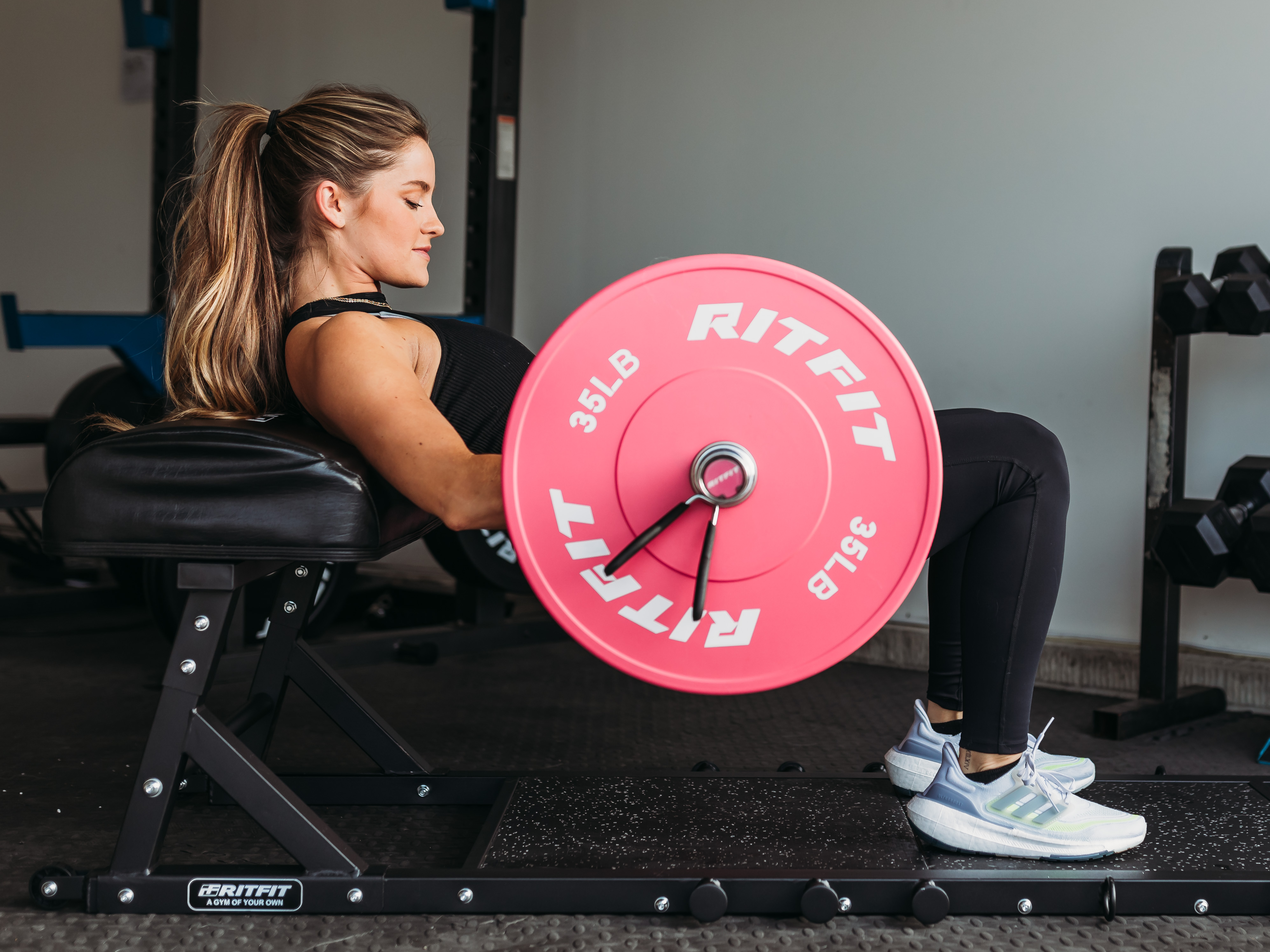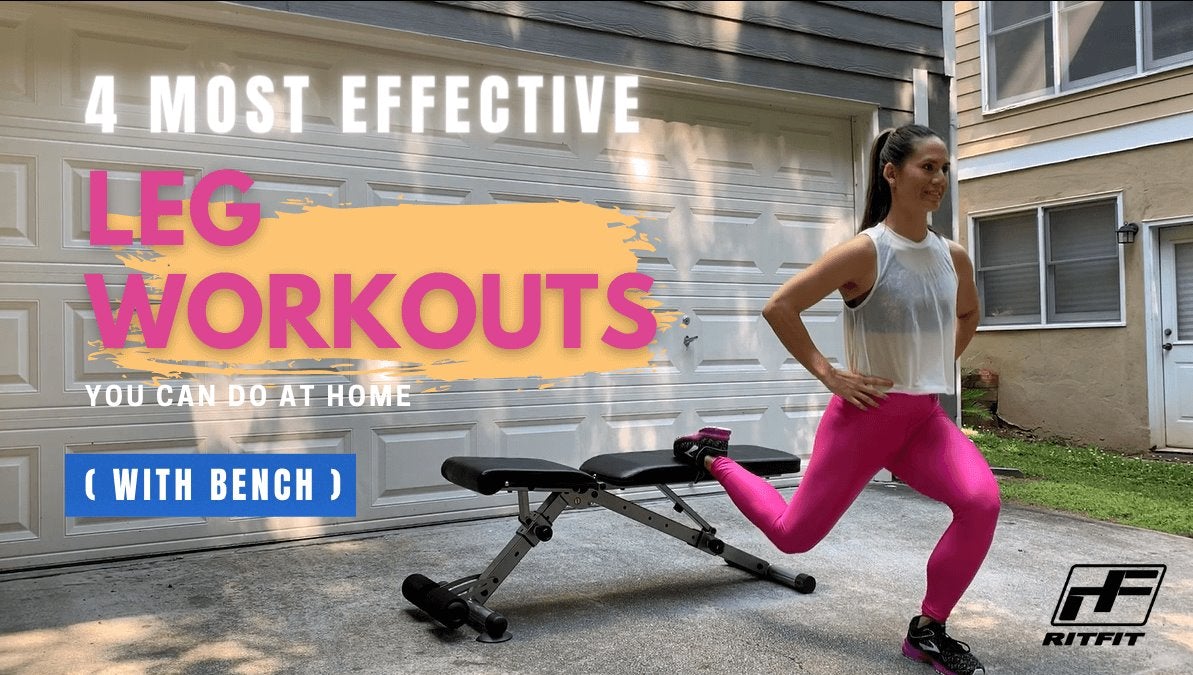Having strong legs can take you far. It’s important to do leg workouts at home because the largest body muscles are located at our bottom. Leg muscles are essential in movements we perform in day-to-day activities or in sports such as running, swimming or cycling. Well-trained legs not only give us a strong back and core but also provide the stability we need for good athletic performance. Luckily, effective leg exercises don't have to be complicated, and they don't even require a gym membership. With a bench, you can do plenty of leg workouts at home to get stronger.
I’ll take you through the following 4 parts to get known of the leg exercises at home you can do :
What do bench leg workout target
Why are leg day exercises important
How to workout legs at home (with bench)
How often should you workout legs
Now let’s dive in.
What Do Bench Leg Workout Target
Training legs means burning more calories, boosting your big lifts, improving your mobility, and, of course, building strength, power and mass. Bench leg workouts target your anterior chain and posterior chain. The anterior chain includes your quadriceps, adductors, hip stabilizers, and the front of your calves. The posterior chain muscles consist of your hamstrings, glutes, back of your calves, abductors, and additional hip stabilizers.
Why are Leg Day Exercises Important
Since they often recruit multiple muscles, leg exercises can be more taxing than most upper-body moves. Being slow to materialise, and the recovery period is longer and more painful, many people will skip their leg days.
But skipping leg day too many times can make you unbalanced and more susceptible to injury.And you might not know it, bench leg workouts are also critical to brain and nervous system health. Research published in Frontiers revealed, your legs send important signals to the brain that can help produce neural cells (essential for handling stress and adapting to challenges).
How to Workout Legs at Home (with bench)
Doing leg exercises at home is probably a lot easier than you realize. To fire up those lower-body muscles, you don't need a leg press machine or a squat bar. All you need is your bodyweight, maybe a bench, and the motivation to put some burn in your quads, hamstrings, glutes, calves, and inner thighs.
Here are 4 most effective leg workouts at home You can do to get these big muscles moving, by using a bench.
1. Step Up
Muscle worked: Glutes and hamstring
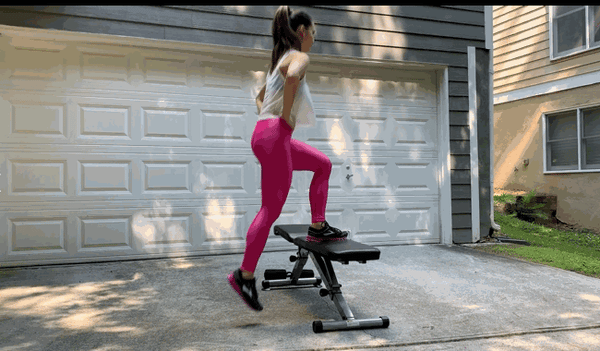
Pick one foot, press through the heel as you step onto the bench. Bringing the other foot up to stand on the bench. Return to the starting position by stepping down with one foot first followed by the other foot. Grab a dumbbell in each hand with your arms fully extended at your sides and palms facing inward to increase the difficulty level.
2. Single-leg Squat
Muscle Worked: Quadriceps, hamstrings, glutes

Extend your arms for balance. Roll your shoulder blades back and keep your back straight. Raise the non-supporting foot from the floor and lower your hip to lightly touch the bench and stand back up.
3. Bench Jump
Muscle Worked: Quadriceps, hamstrings, abductors, glutes
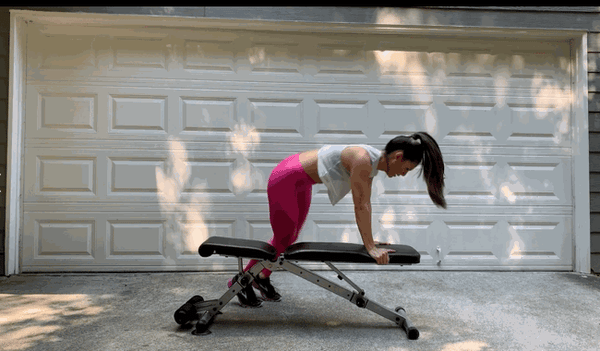
Hold on to the bench with your hands, keep your back straight. Push yourself off the ground and jump from one side of the bench to the other side. Soft land with bent knees and keep the feet as close as possible.
4. Bulgarian Split Squat
Muscle Worked: thigh and glutes
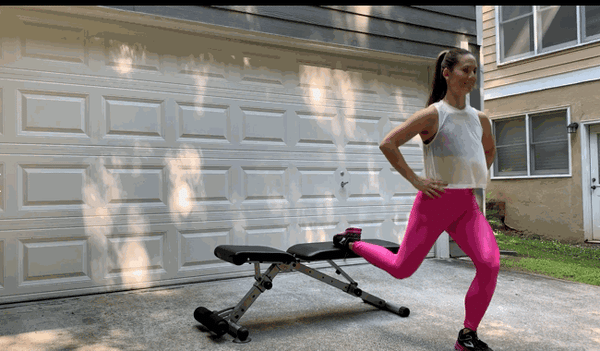
As a single-leg, unilateral squat, the exercise places a greater focus on the quadriceps than the other body muscles.
Keep your feet hip-width apart, pick up a foot and place it on the bench. Lower hip toward the bench so that your rear knee comes close to the floor. Pause and drive through your front heel to return to the starting position. If you find the exercise too easy, grab a dumbbell in each hand with your arms fully extended at your sides and palms facing inward to increase the difficulty level.
How Often Should You Workout Legs
According to researches, when you targeting to maximize muscle growth, there’s not much difference between training leg muscles 1 time per week or 3 times per week. What makes the most difference is resistance training volume, which means how many sets and reps you’re completing. Higher volume sessions (for example, 3 sets of 12 reps, or even 4 sets of 8 reps) tend to produce better results than working the same muscle group multiple times in a week.
So, for leg workouts at home, stick with the basic movements with 3 sets of 12 reps for each exercise is OK.
Conclusion
According to a study published in the Journal of Strength and Conditioning, regularly changing exercises is just as effective as increasing the intensity of your workout. And yup, the effective leg workouts will engage a healthy variety of both your front and back muscles.
We can benefit a lot from bench leg workout, so if you already get the benefits, let me know in the comments section below.



